
Success Story
Dancing With the MDR
The Challenge
The new EU Medical Device Regulation has created a state of upheaval in the sector, with all of the estimated 500,000 MedTech products currently on the market in Europe1 needing to be reapproved by May 2028.
While the regulations are precise about what is required (25 top-level technical file deliverables), every MedTech organisation faces unique challenges in interpreting and executing on the requirements.
With over 15,000 of its own legacy medical devices to be reapproved, and the deadline distant but looming, DePuy Joint Reconstruction launched a significant and complex programme of work.
In its first iteration, the sprawling reapproval was beset by problems with communication between siloed business departments. Quickly, confusion brought on by the program drained resources from ongoing new project development (NPD) and vital deadlines started to be missed.
Seeing the potential for major harm to the business, J&J leadership created a standalone program to manage the reapprovals process. To lead the Joint Reconstruction MDR programme, they tapped Archetype founder Stuart Grant, then the program lead for the R&D Systems and Processes Group at J&J Medical Devices. The team was given a sizable staff and budget, as well as the independence to work as they saw fit to achieve their goal of winning reapproval for 70 devices.
In a multibillion-dollar MedTech behemoth like J&J, simply managing the information flow throughout the company to achieve compliant tech files would prove immensely complex. It was evident that while a deep knowledge of the new regulations was vital, a solid programme strategy built around a robust organisational structure was also mission critical.
1. The European Medical Technology Industry in Figures 2023, MedTech Europe
The Choice
A 20-year veteran of MedTech product development, Stuart had a reputation for quickly getting to the heart of even the thorniest problems, then organising and motivating his team to find a solution.
Most recently shown his capabilities in structural organisation whilst establishing the ASPAC Innovation Centre for J&J in 2011.
His expansive network was also an invaluable asset. With every MedTech company in the world fighting for the same talent to manage their own MDR process, the inability to rapidly hire, onboard, and train the right staff was the single biggest risk to the DePuy programme’s success.
The Solution
Stuart identified from the outset that the various functional units at DePuy were finding MDR unsettling and more than anything, they were looking for basic guidance. So, his priority was to produce a clear list of the brands and products which were in and out of MDR scope, as well as a list of all the top-level deliverables that were required.
This was an enormous task in and of itself and had to be presented at a 2-day workshop attended by all business unit leaders. This approach allowed stakeholders to see the scope of the problem, listen to the proposed solution, and offer their own ideas.
The workshop also became a team-building exercise. Team members from around the world were able to put faces to names for the first time and start thinking about MDR as a unified team.
The success of the workshop showed Stuart that the success of the programme ultimately rested on his ability to gain the respect and support of stakeholders and senior leaders within J&J. Good old-fashioned people skills would win the day.
Stuart travelled far and wide to meet in person with the key players who could facilitate the success of the programme. The relationships he built were just as important as his strategic, engineering, and regulatory expertise.
With stakeholder buy-in achieved and an organisational structure established, the challenge became maintaining the structure, sustaining the momentum, and ensuring that everyone involved stayed flexible as day-to-day needs revealed themselves.
To that end, Stuart decided to adopt the Agile method and manage the programme as a rolling wave. He created small, dedicated teams within the programme. Each team was led by a technical leader responsible for working cross-functionally to ensure that their assigned medical devices met all the MDR requirements. The teams then executed, reviewed, and planned again.
The Impact
The Joint Reconstruction MDR Programme for J&J MedTech received MDR certification from BSI in 2021. All 70 tech files have now been submitted to BSI and the DOCs are signed.
With reapproval achieved, J&J MedTech can continue providing their ground-breaking medical devices to improve the lives of patients within the EU, while retaining worldwide sales which fund ongoing cutting-edge NPD efforts.
MDR is now the new normal and fully embedded within the organisation. The scramble to recertify all legacy devices is over, but the legacy of Stuart’s work can be seen in every NPD project. They are now MDR-ready from conception to ensure a smooth EU market-approval process.
Stuart’s only measure of success was delivering market approval by the deadline. Budget adherence and potential loss of revenue were of course factors to consider, but the focus was always on the end goal: Market approval must be achieved.



